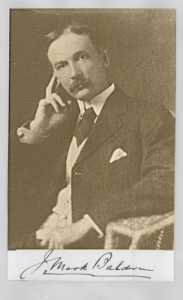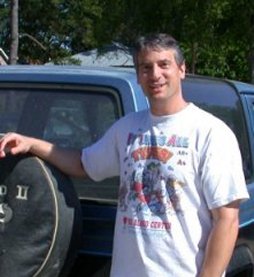Fireside hypnotizability
Following up on a previous post tracking down the original sources for the December Smithsonian piece about hearth fires & cognitive evolution, evolutionary psychologist Matt Rossano’s “Did Meditating Make Us Human?” spins out a model similar to & building on McClenon’s ritual healing hypothesis. Basically, he integrates Klein’s suggestion that a genetic mutation precipitated the Upper Paleolithic human revolution. I know, I know, the revolution that wasn’t, since data now suggest that there was a slow evolution of human cultural capabilities that culminated in a glut of evidence for human symbolic expression at the Upper Paleolithic in Europe.
But wait, why didn’t we have a slow accumulation over a longer period of time? We have evidence of human symbolic creativity much earlier in Africa but why the sudden, rapid, & more extensive appearance in Europe? Could we have both a slow evolution followed by a rapid revolution? Rossano suggests we could have. He portrays the scenario as follows:
- Convincing evidence of symbolic expression does not appear until after 50,000 bp.
- This symbolic expression appeared late in human evolution as the result of a genetic mutation that enhanced working memory.
- This mutation may be the result of a Baldwin effect, which is a heritable mutation that follows functional change instead of the other way around.
- The functional change may have been the increased experience of fireside trance that resulted from continual fire use/ritual, as neuroscience indicates that meditative states influence the areas of the brain devoted to working memory.
- Thus, hypnotizability may have been fitness-enhancing in our evolutionary past.
Campfire rituals disporportionally enhanced the health of those whose brains permitted the deepest immersion in the rituals; and this, in turn, selected for brains with enhanced working memory capacity (Rossano 2007:48).
Symbolic Thinking
Rossano makes a good point, citing Charles Peirce, with regard to symbolic thinking. Referential thinking comes in three forms, according to Peirce–iconic, indexical, & symbolic. Iconic things look like what they describe (e.g., circle to stand for a ball), & indices indicate (go figure) the spatial or temporal presence (e.g., a puddle indicates recent rain). Peirce reserves the term “symbolic” for relationships that are arbitrary (e.g., & for and).
It is this “higher-level” Peircian symbolism that arrived later in human evolution. So, while we see evidence for communicative culture, we don’t see the emergence of symbolic until the period of the human revolution & the Middle Paleolithic. This emergence relied on enhanced working memory, according to Rossano’s model.
Baldwin Effect

James Mark Baldwin was an American psychologist & philosopher of the late 19th century who made significant contributions to development psychology & evolutionary theory, among other things. His non-Lamarckian explanation for how environmental conditions could drive heritable change is a predecessor to contemporary epigenetic theory.
The Baldwin effect is a principle of evo-devo that was outlined over 100 years ago as a non-Lamarckian way for environmental pressures to drive heritable change. It was displaced by the modern synthesis but has re-emerged in the wake of Waddington’s conceptualization of canalisation & the epigenetic landscape. For instance, who found that by exposing pupal fruit flies to heat stress, he could produce a developmental change that would be inherited by subsequent generations in the absence of the stress. Similar mechanisms have been demonstrated in other animals, including mammals.
Rossano suggests that environmental changes pushing humans to adapt in unique ways could have driven a Baldwin-like effect in our ancestors. There is a bit of tautology here, as he doesn’t propose what that environmental change was. He merely says that human brains got suddenly bigger after not having been big for a long time, thus, Baldwin effect. Actually, he is insinuating, I think, that the environmental change is the use of fire. But he doesn’t explain how fire has been used by hominids since erectines but is not driving the Baldwin effect until much later. Why the ramped up use of fire?
He & Gowlett don’t cite each other in the articles I’ve read so far, but perhaps they could help each other out on this point.
Meditation
There has been a slough of meditation research over the past several decades that have demonstrated affects on the brain. I spent a fair amount of time reviewing the literature as a grad student, so I am an easy sell on this point, but Rossano’s conclusions suggest more than simply, ‘meditating is good for reducing stress & thus is healthy.’ He says, more profoundly, that
meditation produces long-term changes in those areas of the brain involved in attention and working memory. These areas are critical for the enhancement of working memory capacity. This enhancement may have given Homo sapiens a competitive edge over other hominins and produced the emergence of symbolism about 50,000 bp. However, it can rightly be pointed out that it seems quite unlikely that our ancestors of 100,000 years ago or more were engaging in one-point or compassionate meditation. While true, numerous other studies have shown that far more mundane memory and attention tasks also activate the same brain areas.
He points out that relatively simple neuroscience tasks produce effect improved memory & speculates that shamanic campfire rituals probably included more complicated tasks & would be have a greater affect on memory, including those of children who were doubtless present (& thus provide the circumstances for a Baldwin effect).
Hmm…
As much as I study this topic & find myself compelled by these models, when we get to the juncture of the shamanic campfire ritual, I find that I am rolling my eyes at what seems New Age-y mumbo jumbo. I find the Baldwin effect driving a mutation related to working memory & attention compelling, as it provides a better mechanism that Wrangham & McClenon’s fireside-trance-made-people-nicer-&-thus-fitter model, but the shamanic model of human evolution still sounds hokey. But I don’t have a better explanation for the evidence, & until it occurs to me or something better comes along…


Hi Rebecca,
For some reason, I’ve haven’t been getting comments in my inbox, so I missed this. Yes, I’d be very interested! I’m at cdlynn@ua.edu
Hi Chris, this is very interesting, and not something I’ve come across. I feel however that working memory models underestimate Neanderthal capacity here, given their composite technology involving halting tools using birch pitch, going back to about 300 Ka. I’m publishing on this very soon (edited volume chapter), can send you some info if you’re interested.